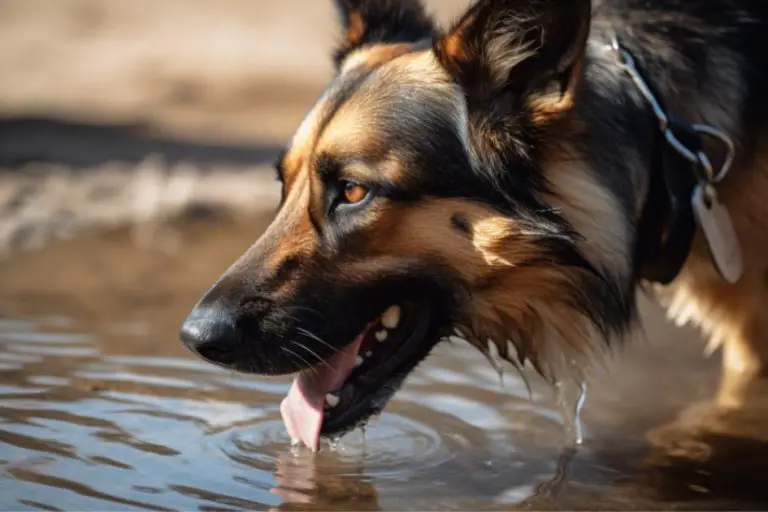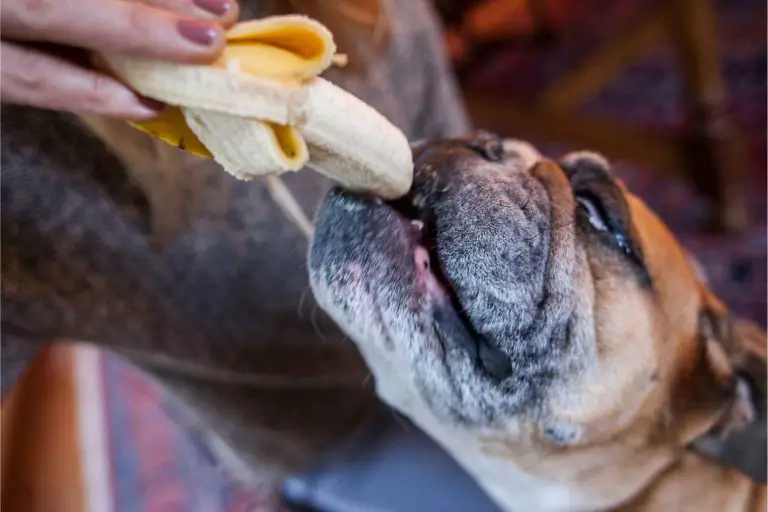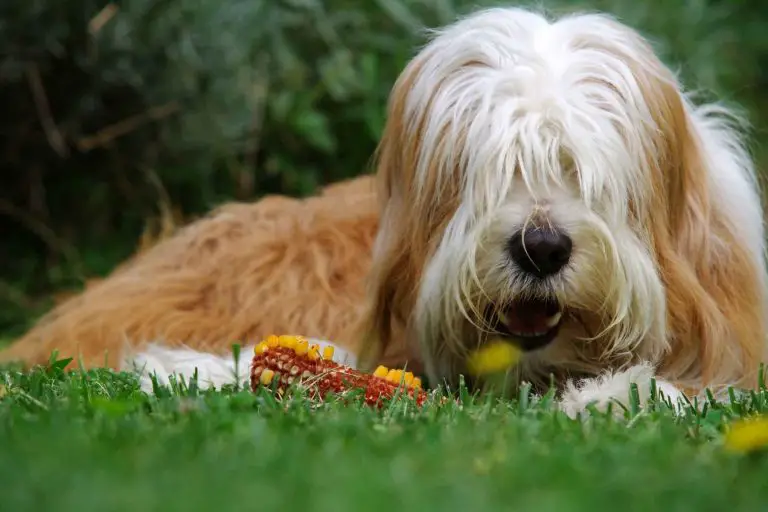Can Dogs Eat Tomatoes?

Is it a fruit, or is it a vegetable? No matter which side of the great debate you stand on, there’s no denying that this versatile food makes a great addition to many dishes.
Regarding your dog, there’s no clear-cut answer as to whether or not you should include tomatoes in their diet. On the one hand, tomatoes possess vitamins and antioxidants that can support a healthy body and immune system. On the other hand, the tomato plant has several toxic ingredients that can severely harm the health of your canine.
Continue reading to discover when dogs can eat tomatoes, which kinds of tomatoes they can eat, and whether adding tomato sauce to their dinner is a good thing to do.
Can Dogs Eat Tomatoes?
When it comes to tomatoes, there’s no clear-cut answer as to whether your pup may or may not eat this fruit.
On the one hand, tomatoes are a member of the nightshade family and may contain harmful substances to your canine. On the green part of the plants, you’ll find poisonous Solanine and the natural chemical, Tomatine. For these reasons, your dog should never eat a green tomato.
On the other hand, if your tomato is red and ripe, it’s probably safe enough to feed to your dog, though you should only do this as a treat in small quantities.
Are Tomatoes Healthy For My Dog?
Ripe, red tomatoes might be safe enough to feed your dog, but that doesn’t necessarily mean you should do it. This fruit can still cause a stomach upset in your dog, particularly if they have a sensitive disposition.
Tomatoes contain vitamins, minerals, and antioxidants which aid in cell function and tissue growth in your dog, and their high fiber content supports healthy digestion.
While tomatoes possess some health benefits, they have nowhere near the balanced nutrition that dog food will provide to your pet. If your dog loves tomatoes, there’s no harm in giving them a nibble every once in a while, but avoid making this a regular part of their diet.
How Can I Safely Prepare A Tomato For My Dog?
One of the essential factors in sharing tomatoes with your dog is only to give them small amounts. If they’ve never had tomatoes before, start with a tiny amount to see how they react and avoid giving them too much as the acidity can upset their stomachs.
Before you feed the tomato to your dog, ensure you have removed any green parts; this includes the leaves, stem, or any green areas of the tomato.
How Much Tomato Can A Dog Eat?
Always start with a small amount, such as a one-inch cube of new foods, to test your dogs reaction. As long as they don’t show any signs of allergy or intolerance, you should be okay to feed them up to two ripe tomatoes per week.
Bear in mind that treats (and this includes any human foods) should account for a maximum of 10% of your dog’s overall diet.
The exact amount of tomato that your dog can safely consume depends on its age, size, constitution, and a range of other factors. Any time you make changes to your pet’s diet, consult with a vet beforehand to get the best guidance and advice.
Will One Tomato Hurt My Dog?
It’s improbable that one tomato will hurt your dog, but it’s not impossible. Always test your canine with a small amount of tomato before allowing them to eat more.
Every animal is unique, and how one dog reacts to a tomato could be entirely different from how your dog reacts.
Are Organic Tomatoes Better For My Dog?
Yes, if you’re going to treat your dog to a bite of tomato, then organic is better because it has not been sprayed with pesticides.
What Happens If A Dog Eats A Tomato?
If your dog eats the odd tomato, it shouldn’t do too much damage – it may be a mild stomach upset over the following 24 hours. However, if they take a bite from the tomato plant itself, they could end up with tomatine poisoning, particularly common in the leaves and stalks.
This is pretty rare, but if you notice sickness, diarrhea, lethargy, uncoordinated movements, or an abnormal heart rate, consult your vet immediately.
What Is Tomatine Poisoning?
Consuming large amounts of the toxins in tomatoes can lead to tomatine poisoning, though the chances of this are slim.
Smaller dogs are at an increased risk of tomatine poisoning, as are dogs who consume the leaves or plant of the tomato. If you suspect your dog has tomatine poisoning, keep an eye out for the following symptoms:
- Gastrointestinal upset such as vomiting or diarrhea
- Loss of appetite
- Lack of coordinated movement or muscle weakness
- Tiredness or lethargy
- Irregular heartbeat
- Tremors or seizures
- Excessive salivation
- Dilated pupils
This type of poisoning is rare in dogs, and most canines will fully recover. The most common treatments include blood work and induced vomiting; this is usually sufficient for your dog to recover fully.
How Can I Reduce The Risk Of Tomatine Poisoning?
To reduce this risk avoid growing tomatoes in your garden; if you’re particularly green-fingered, ensure you fence these plants off at the very least. The green foliage is the most dangerous part of this food for dogs, so you’ll want to keep them away from it whenever you can.
If you keep tomatoes inside, ensure they are out of your dog’s reach. Keep an eye on your dog around food to ensure they don’t consume excessive amounts when you turn your back.
Are Dogs Allergic To Tomatoes?
Most dogs aren’t allergic to tomatoes; the chances of a reaction are rare, but some canines may react with coughing, wheezing, breathing difficulties, or hives after eating a tomato.
Can Dogs Eat Raw Tomatoes?
Yes, if the tomato is red and ripe, your dog can eat raw tomato in moderation. However, you should never allow your dog to eat an unripe tomato.
Can Dogs Eat Tinned Tomatoes Or Tomato Sauce?
It’s not a good idea to feed your dog any kind of tomato sauce or artificial product. The main reason for this is that manufactured food such as pasta sauces and tinned goods often contain a number of additional ingredients.
Among these, salt and preservatives are common, as well as onion and garlic, which are all bad for your canine.
Just because your dog can eat tomatoes doesn’t mean that they can eat anything with tomatoes. For example, the tomato sauce on top of a pizza is highly likely to contain salt, garlic, and other harmful ingredients for your dog.
Why Is Salt Bad For My Dog?
Salt is in almost all foods we (and dogs) eat, and some sodium is essential to their diet. It helps to regulate blood pressure and fluid levels. The problem is that many human foods have added salt to improve the flavor, and these excessive amounts can lead to hypernatremia.
Hypernatremia occurs when the sodium level in the blood is too high; this can lead to dehydration as the muscles and tissues release fluids to balance the sodium levels in your dog’s blood. If they lose too much fluid, a dog may experience stiff joints, uncoordinated movements, tremors, or seizures.
Why Are Onions and Garlic Bad For My Dog?
Onions and garlic are members of the Allium family and some of the most common culprits for toxicity in dogs. These foods contain N-propyl disulfide, a compound that reduces the blood’s ability to transport oxygen effectively.
And this can lead to anemia, which contributes to organ damage, failure, and in extreme cases, death. There is no “safe” amount of these foods for your dog to consume; instead, you’ll need to ensure they avoid them altogether.
Common signs that your dog has onion toxicity include weakness, lethargy, discolored urine, loss of coordination, vomiting, diarrhea, increased heart rate, rapid breathing, or excessive salivation. If your dog eats onion or garlic, you’ll need to contact your vet for advice.
Can Dogs Drink Tomato Juice?
Dogs can eat tomatoes, so it stands to reason that they can drink the fluid from inside this fruit. The problem is that most manufactured tomato juices contain extra ingredients.
Similar to canned tomatoes and tomato sauces, the problem with allowing your dog to drink tomato juice is you don’t know what the other ingredients are in this product – one of the biggest problems is the high salt level.
If your dog enjoys tomatoes, the best way for them to enjoy this fruit is to eat it naturally without any additives or preservatives.
Final Thoughts
Like all human foods, tomatoes are a treat best served in moderation. While they possess some health benefits for your canine, they also come with hazards. Ideally, you only want the ripe red fruit in your home to help prevent tomatine poisoning.
But with care and attentiveness, there’s no reason why your canine can’t enjoy the odd taste of this versatile fruit.






